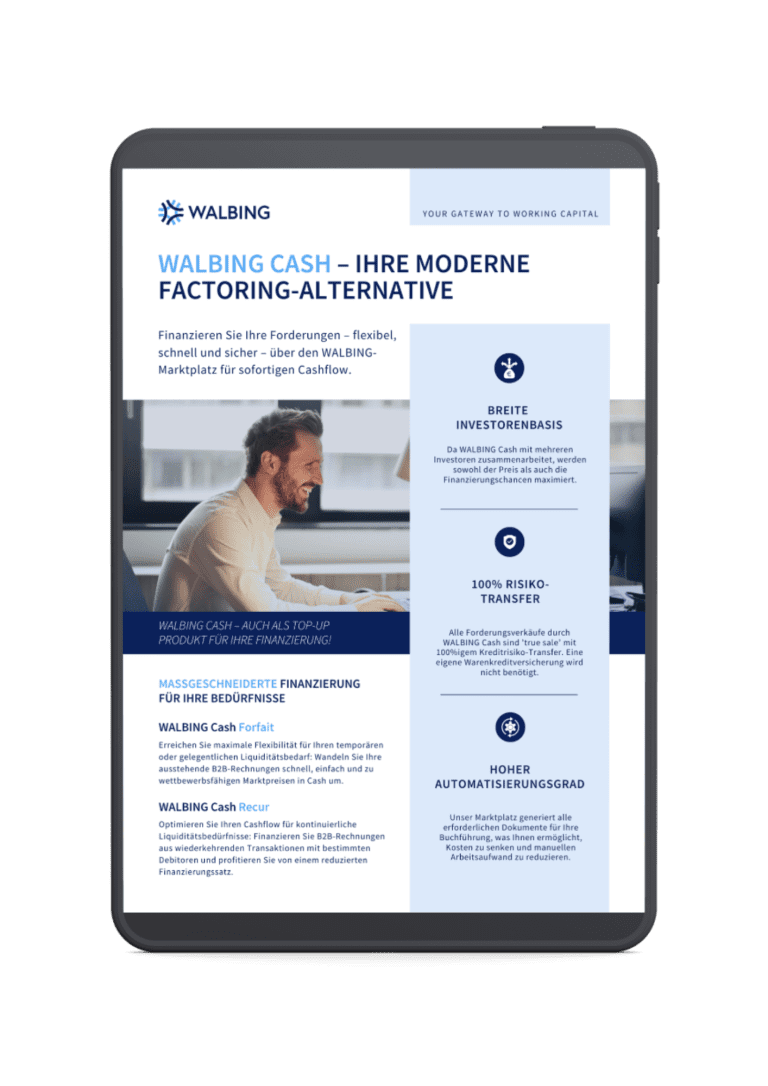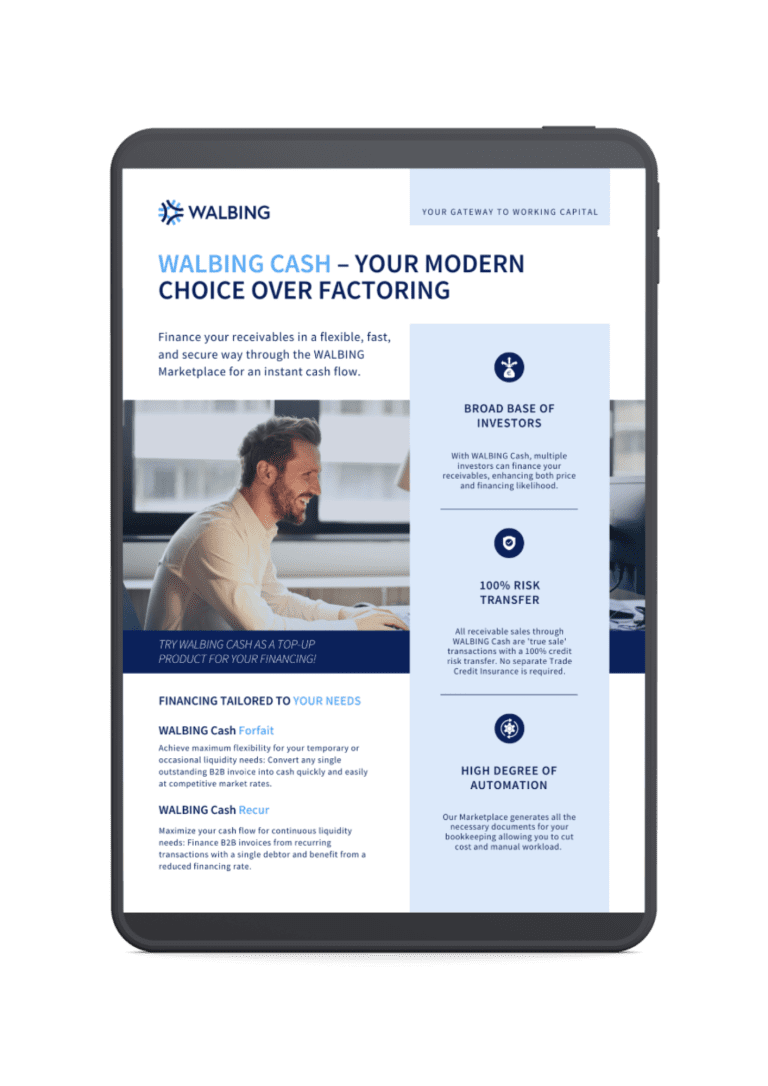Amid the current volatility of global markets, companies are especially forced to watch their liquidity buffer. However, these liquidity buffers have been melting away since the Covid lockdowns. As a result, companies are now increasingly looking for financing options that allow them to access liquidity quickly.
Correspondingly, companies are facing a wide range of offers these days: Working capital loans, factoring, invoice discounting, or a simple discount – to name just a few. The problem with these offers, however, is that they are not comparable. Time and again we find that in view of the overabundance of different fees and financing models, companies lose sight of the most important parameter – the annual cost of capital
Many providers advertise supposedly low fees and costs, which upon closer inspection quickly turn out to be expensive. The only way to compare these “apples and oranges” is to convert them into capital costs per year.
Low fees as bait
We promise you, it’s worth using your calculator.
Take factoring as an example: Here, the sale of receivables is sometimes advertised with a fee of only 0.5 percent. Tempting! However, this is only part of the truth. Because in addition to the factoring fee, there is also an interest rate and capital costs for trade credit insurance. Such an offer becomes comparable only when it is converted into annual capital costs. The formula for this is:
Cost of Capital p.a., % = factoring interest rate p.a., % + Cost of Capital for trade credit insurance p.a.,% + factoring fees % per invoice × 365/payment termIf we now estimate an interest rate of 0.8 percent each for the factoring interest rate, factoring fees and trade credit insurance and take a payment term of 60 days as a basis, we end up with an annual cost of capital of 6.47 percent, which is quite a different figure.
The rule and not the exception
However, it is not only the factoring providers who can easily mislead customers with their offers. Invoice discounting is also advertised with low fees. And you may have guessed it: when it comes to conversion into capital costs, this financing option does not do much better than factoring.
The formula for the calculation in invoice discounting is:
Cost of Capital p.a., % = discount financing rate p.a., % + fees % per invoice × invoice amount/financing volume × 365/payment termLet’s assume an invoice amount of 100,000 Euro and a total financing volume of 1.2 million Euro. The payment term should be 60 days, the discount financing rate 1 percent, and other fees per invoice – 8 percent. In this example, the cost of capital per year is 5.06 percent.
Even with the classic discount, this calculation example does not get better – on the contrary. Usually, the discount rate is 2 percent, which may not seem much for most people, neither in percentage nor in absolute terms. However, those who go through the trouble of converting it into capital costs, are in for a big surprise. After all, with a payment term of 60 days and a discount period of 20 days, this already amounts to an impressive 18.25 percent. Here is the formula is:
Cost of capital p.a., % = 365/(payment term - discount period) × discount rate, %Cost of working capital loans
When we open up this cost of capital calculation, most customers are amazed that the classic working capital loan is comparatively less expensive than many of the supposedly more attractive financing offers. Let us look at an example using the following formula:
Cost of capital p.a., % = Interest rate for utilization, % × average duration of utilization/365 + commitment commission, % × (365 - average duration of utilization)/365If the interest rate for the working capital loan is 6 percent for utilization and the issuing bank charges a commitment commission of 4 percent for non-utilization, the annual cost of capital of a working capital loan in the form of negative balances of a current account for 60 days is thus actually “only” 4.33 percent.
These sample calculations make it clear that low fees can be misleading. After all, if the order situation is already tense, every percentage point that can be saved in annual capital costs probably counts twice as much.
WALBING: Determine capital costs yourself
This is one reason why we feel that we are so well positioned with our marketplace for B2B invoice financing. Because instead of luring customers with any kind of bait, WALBING Marketplace scores with absolute transparency. The very moment a customer decides to sell an open receivable, they are in control over the maximum capital costs. With our cost of capital calculator, we provide sellers with a range of the usual market prices. Our recommendation: Do the math and just give it a try.









